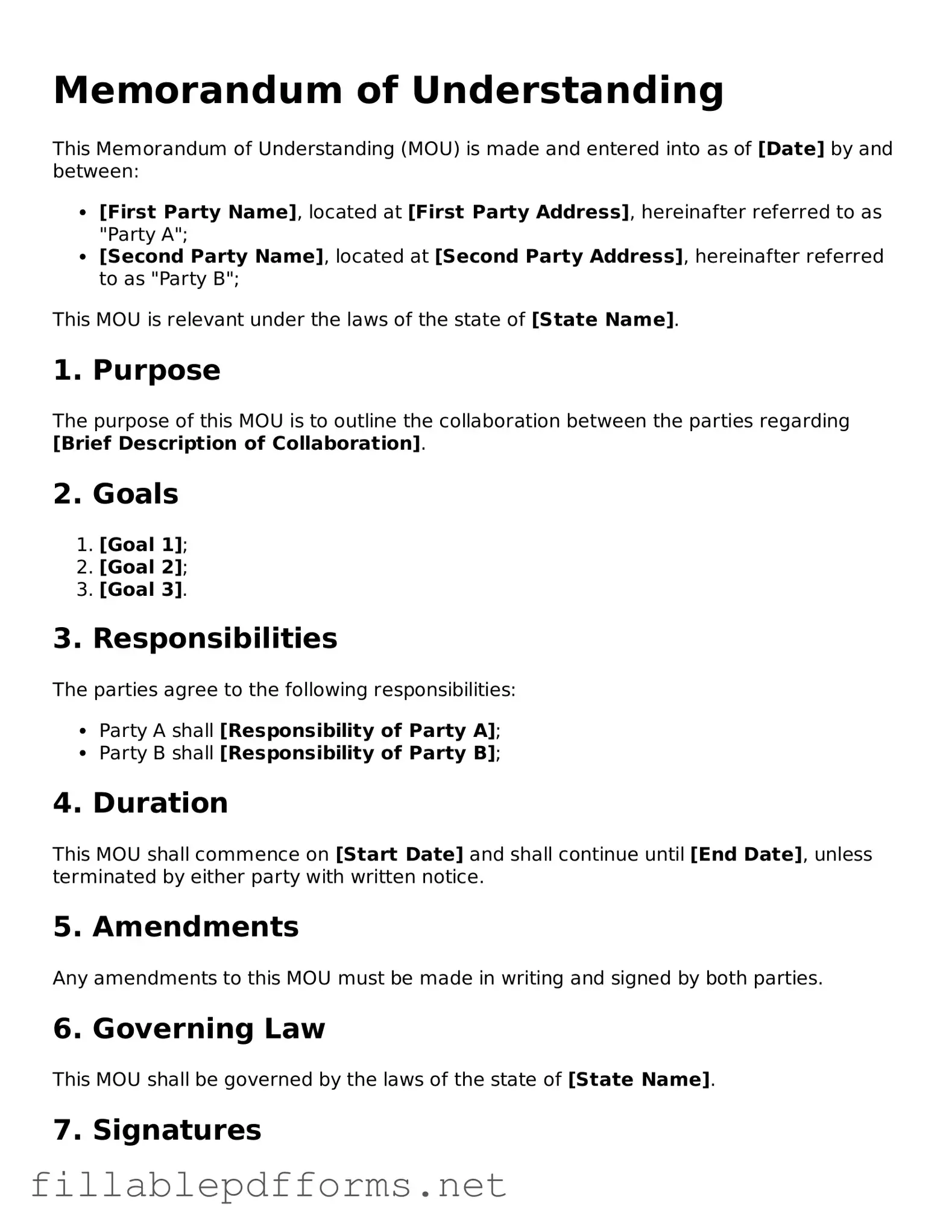Blank Memorandum of Understanding Template
A Memorandum of Understanding (MOU) is a formal agreement between two or more parties that outlines their intentions and the terms of their collaboration. It serves as a useful tool to clarify expectations and responsibilities without creating legally binding obligations. MOUs can facilitate partnerships across various sectors, including government, non-profit, and private organizations.
Launch Editor Here
